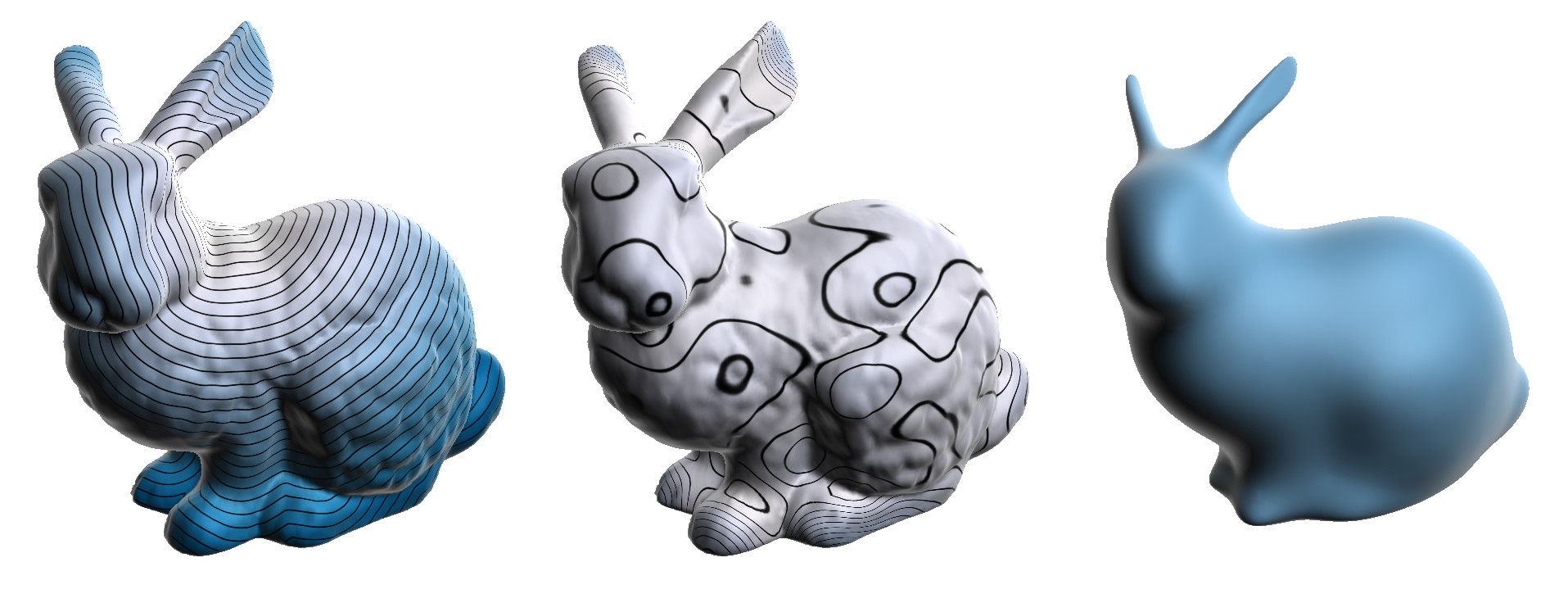Ecosyste.ms: Awesome
An open API service indexing awesome lists of open source software.
https://github.com/larc/gproshan
geometry processing and shape analysis framework
https://github.com/larc/gproshan
computational-geometry cpp cuda dictionary-learning geometry-processing opengl shape-analysis sparse-coding
Last synced: 10 days ago
JSON representation
geometry processing and shape analysis framework
- Host: GitHub
- URL: https://github.com/larc/gproshan
- Owner: larc
- License: mit
- Created: 2017-04-19T01:23:17.000Z (about 7 years ago)
- Default Branch: main
- Last Pushed: 2024-03-27T14:17:58.000Z (3 months ago)
- Last Synced: 2024-03-27T15:35:57.910Z (3 months ago)
- Topics: computational-geometry, cpp, cuda, dictionary-learning, geometry-processing, opengl, shape-analysis, sparse-coding
- Language: C++
- Homepage: https://github.com/larc/gproshan
- Size: 47.7 MB
- Stars: 59
- Watchers: 8
- Forks: 13
- Open Issues: 1
-
Metadata Files:
- Readme: README.md
- License: LICENSE.md
Lists
- awesome-geometry-processing - gproshan
README
## [gproshan](https://github.com/larc/gproshan): a geometry processing and shape analysis framework

This framework integrates some algorithms and contributions focus on the areas of computer graphics, geometry processing and computational geometry.
## Build and Run
Install all dependencies and run:
mkdir build
cd build
cmake ..
make
finally execute:
./gproshan [mesh_paths.(off,obj,ply)]
### Dependencies (Linux)
g++ >= 8.3, cuda >= 10.1, libarmadillo, libeigen, libsuitesparse, libopenblas, opengl, glew, gnuplot, libcgal, libgles2-mesa, cimg
In Ubuntu (>= 18.04) you can install them with:
sudo apt install libarmadillo-dev libeigen3-dev libopenblas-dev libsuitesparse-dev libglew-dev freeglut3-dev libgles2-mesa-dev cimg-dev libcgal-dev
#### Build Status
##### Ubuntu 18.04 (Bionic)
[](https://travis-ci.com/larc/gproshan)
## Contributions
### CHE implementation
We have implemented a [Compact Half-Edge (CHE)](http://citeseerx.ist.psu.edu/viewdoc/summary?doi=10.1.1.523.7580) data structure to manipulated triangular meshes, also can be extended for other polygonal meshes.
See the paper: [CHE: A scalable topological data structure for triangular meshes](http://citeseerx.ist.psu.edu/viewdoc/summary?doi=10.1.1.523.7580) for more details.
### Geodesics
We proposed a CPU/GPU parallel algorithm to compute geodesics distances on triangular meshes. Our
approach is competitive with the current methods and is simple to implement. Please cite our paper:
[A minimalistic approach for fast computation of geodesic distances on triangular meshes](https://doi.org/10.1016/j.cag.2019.08.014)
```bibtex
@Article{ROMEROCALLA2019,
author = { {Romero Calla}, Luciano A. and {Fuentes Perez}, Lizeth J. and Montenegro, Anselmo A. },
title = { A minimalistic approach for fast computation of geodesic distances on triangular meshes },
journal = { Computers \& Graphics },
year = { 2019 },
issn = { 0097-8493 },
doi = { https://doi.org/10.1016/j.cag.2019.08.014 },
keywords = { Geodesic distance, Fast marching, Triangular meshes, Parallel programming, Breadth-first search },
url = { http://www.sciencedirect.com/science/article/pii/S0097849319301426 }
}
```
Also, we have implemented the [Fast Marching algorithm](), and the [Heat method](https://www.cs.cmu.edu/~kmcrane/Projects/HeatMethod/index.html).
### Dictionary Learning
We proposed a Dictionary Learning and Sparse Coding framework, to solve the problems of Denoising,
Inpainting, and Multiresolution on triangular meshes. This work is still in process. Please cite
our work:
[A Dictionary Learning-based framework on Triangular Meshes](https://arxiv.org/abs/1810.08266)
```bibtex
@ARTICLE{2018arXiv181008266F,
author = { {Fuentes Perez}, L.~J. and {Romero Calla}, L.~A. and {Montenegro}, A.~A. },
title = { Dictionary Learning-based Inpainting on Triangular Meshes },
journal = { ArXiv e-prints },
eprint = { 1810.08266 },
year = 2018,
month = oct,
url = { https://arxiv.org/abs/1810.08266 }
}
```
### Hole repairing
We implemented repairing mesh holes in two steps:
1. Generate a mesh to cover the hole. We modified the algorithm presented in the paper: [A robust hole-filling algorithm for triangular mesh](https://doi.org/10.1007/s00371-007-0167-y), in order to
generate a planar triangular mesh using a priority queue.
2. Fit the surface described by the new points in order to minimize the variation of the surface,
solving the Poisson equation (see the Chapter 4 of the book [Polygon Mesh Processing](http://www.pmp-book.org/)) or using Biharmonic splines.
Please see and cite our final undergraduate project: [mesh hole repairing report](http://repositorio.unsa.edu.pe/handle/UNSA/2576) (in Spanish).
### Key-Points and Key-Components
We proposed a simple method based on the faces' areas to compute key-points for adaptive meshes.
Please cite our paper (in Spanish):
[Efficient approach for interest points detection in non-rigid shapes](https://doi.org/10.1109/CLEI.2015.7359459)
```bibtex
@INPROCEEDINGS{7359459,
author = { C. J. Lopez Del Alamo and L. A. Romero Calla and L. J. Fuentes Perez },
booktitle = { 2015 Latin American Computing Conference (CLEI) },
title = { Efficient approach for interest points detection in non-rigid shapes },
year = { 2015 },
month = { Oct },
pages = { 1-8 },
doi = { 10.1109/CLEI.2015.7359459 }
}
```
Computing key-components depends on the accuracy and definition of the key points. We were inspired
by the [work of Ivan Sipiran](https://www.researchgate.net/publication/262350194_Key-component_detection_on_3D_meshes_using_local_features),
he defined for the first time the notion of a key-component in meshes.
We proposed a method based on geodesics to determine the key components.
Please see and cite our final undergraduate project: [key-components report](http://repositorio.unsa.edu.pe/handle/UNSA/2575) (in Spanish).
### Decimation
We are implementing the algorithm described by the paper [Stellar Mesh Simplification Using Probabilistic Optimization](https://doi.org/10.1111/j.1467-8659.2004.00811.x),
to compute a mesh simplification.
### Fairing
We implemented Spectral and Taubin fairing algorithms to smooth a mesh surface.
See the Chapter 4 of the book [Polygon Mesh Processing](http://www.pmp-book.org/).
### Laplacian and signatures
Laplace-Beltrami operator and its eigen decomposition, WKS, HKS, GPS signatures.
## Documentation
Execute:
doxygen Doxyfile
to generate the documentation in *html* and *LaTeX*.
## Viewer
The viewer was initially based in the viewer of [https://github.com/dgpdec/course](https://github.com/dgpdec/course). The current viewer uses VAO and VBO to render, and the shaders have been modified and upgraded.
## License
MIT License
## Authors
- [Lizeth Joseline Fuentes Pérez](https://github.com/lishh)
- [Luciano Arnaldo Romero Calla](https://github.com/larc)